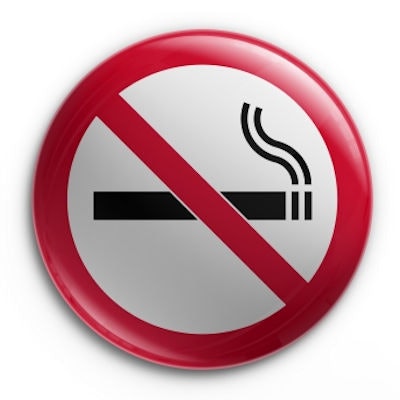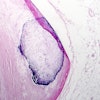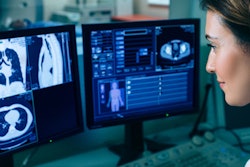
Performing CT lung cancer screening based on an individual's cancer risk rather than one-size-fits-all guidelines could be a more efficient way to figure out who needs screening, according to a May 14 article in the Annals of Internal Medicine. Four risk models, in particular, seem to stand out from the rest.
The researchers from the U.S. National Cancer Institute and the American Cancer Society searched Medline for lung cancer risk-prediction models from studies published between January 2000 and December 2016. Among the 10 models that were valid for Western populations and did not require biomarker testing, four models predicted the number of individuals eligible for screening with comparable accuracy to estimations using the U.S. Preventive Services Task Force (USPSTF) guidelines.
The Bach model; Lung Cancer Risk Assessment Tool; Lung Cancer Death Risk Assessment Tool; and Prostate, Lung, Colorectal, and Ovarian Cancer Screening Trial Model 2012 could be recommended by future risk-based lung cancer screening guidelines, first author Hormuzd Katki, PhD, told AuntMinnie.com.
"We, and others, have estimated that risk-based lung cancer screening should be more effective and efficient than current screening guidelines, which currently miss a substantial group of high-risk ever-smokers," he said. "Thus, moving to risk-based screening might increase uptake of lung cancer screening and appropriately broaden the population of ever-smokers who might consider screening."
9 risk-prediction models
 Hormuzd Katki, PhD.
Hormuzd Katki, PhD.
Various groups around the world have used combinations of these criteria to develop models capable of predicting who has the greatest risk of developing treatable lung cancer and, therefore, should undergo CT screening. A few examples are the Pan-Canadian Early Detection of Lung Cancer (PanCan) risk-prediction model, a polynomial model by Schreuder et al, and the Bach model by Bach et al.
"Studies by our team and others have demonstrated that using individualized lung cancer risk models to offer lung cancer screening to ever-smokers might save more lives, and do so more effectively and efficiently, than current USPSTF guidelines," Katki said.
Examining nine such risk-prediction models under the wing of a single study, Katki and colleagues assessed their overall performance to determine which ones were best suited for screening. They selected the nine following risk models from 331 articles published between January 2000 and December 2016:
- Bach model
- Lung Cancer Risk Assessment Tool (LCRAT)
- Lung Cancer Death Risk Assessment Tool (LCDRAT)
- Prostate, Lung, Colorectal, and Ovarian Cancer Screening Trial Model 2012 (PLCOM2012)
- Pittsburgh Predictor
- Liverpool Lung Project (LLP) model
- Liverpool Lung Project Incidence (LLPi) model
- Spitz model
- Hoggart model
The investigators validated these risk-prediction models by calculating the calibration (ratio of expected to observed cases of cancer screening) and discrimination (area under the curve) of each of the models across demographic subgroups in two separate cohorts: the U.S. National Institutes of Health - AARP Diet and Health Study (NIH-AARP) and the American Cancer Society Cancer Prevention Study II (CPS-II). Next, they applied each of these models to a representative sample of the U.S. population from the National Health Interview Survey of 2010 through 2012 to predict the number of individuals who would be eligible for screening.
4 highest-ranked models
Among the risk-prediction models, the Bach model, LCRAT, LCDRAT, and PLCOM2012 had the best overall calibration and areas under the curve for the roughly 330,000 participants in the NIH-AARP and 72,000 participants in the CPS-II. These models' predictions for the number of individuals eligible for lung cancer screening were closest to the actual number of individuals who were eligible under the USPSTF guidelines, with a collective consensus of 73%.
The Pittsburgh Predictor performed well for the NIH-AARP cohort but not as well for the CPS-II cohort, and the LLP, LLPi, Spitz, and Hoggart models considerably overestimated lung cancer risk.
| Comparison of risk-prediction models for CT lung cancer screening | ||||
| Risk model | NIH-AARP | CPS-II | ||
| Ratio of expected to observed cases | Area under the curve | Ratio of expected to observed cases | Area under the curve | |
| Bach | 1 | 0.755 | 0.97 | 0.75 |
| Lung Cancer Risk Assessment Tool | 0.97 | 0.771 | 0.96 | 0.77 |
| Lung Cancer Death Risk Assessment Tool | 1.04 | 0.779 | 1.12 | 0.786 |
| Prostate, Lung, Colorectal, and Ovarian Cancer Screening Trial Model 2012 | 0.92 | 0.769 | 0.99 | 0.754 |
| Pittsburgh Predictor | 1.01 | 0.752 | 0.83 | 0.747 |
| Liverpool Lung Project | 1.18 | 0.707 | 1.72 | 0.726 |
| Liverpool Lung Project Incidence | 1.86 | 0.714 | 2.56 | 0.721 |
| Spitz | 2.72 | 0.707 | 1.72 | 0.726 |
| Hoggart | 2.85 | 0.714 | 2.27 | 0.751 |
What's more, when using a five-year lung cancer risk threshold of 2%, the four "best" risk models, as well as the Pittsburgh Predictor, deemed just about the same number of people eligible for screening as the USPSTF guidelines did. On the other hand, the remaining four models largely overestimated the number of eligible participants.
| Number of individuals eligible for CT lung cancer screening by risk model | |
| Risk model | No. of individuals |
| USPSTF | 8.9 million |
| Prostate, Lung, Colorectal, and Ovarian Cancer Screening Trial Model 2012 | 7.6 million |
| Lung Cancer Risk Assessment Tool | 8.9 million |
| Lung Cancer Death Risk Assessment Tool | 8.9 million |
| Pittsburgh Predictor | 9.6 million |
| Bach | 10.9 million |
| Liverpool Lung Project | 14.5 million |
| Hoggart | 21.6 million |
| Liverpool Lung Project Incidence | 22 million |
| Spitz | 26.3 million |
Researchers should continue refining these models and improving their accuracy at estimating lung cancer risk, which may require recalibrating them based on cancer rates, first in the general population and then in unique subpopulations, Katki said.
"The four models that we found performed the best overall should still be improved so that they work better in subpopulations, especially racial and ethnic subpopulations," he said.
6 ways to improve implementation
Though multiple trials have demonstrated the potential advantages of these risk-based models for deciding screening eligibility, their implementation into routine clinical practice will take time, wrote Martin Tammemägi, PhD, from Brock University in Ontario, Canada, in an accompanying editorial.
He offered the following six steps to help drive CT lung cancer screening in that direction:
-
Convince policymakers to accept the use of risk models when identifying screening-eligible individuals, even though the models are not explicitly recommended by the USPSTF or U.S. Centers for Medicare and Medicaid Services (CMS) guidelines. Implementing risk-based models in prospective studies, such as the ongoing International Lung Screen Trial (ILST), is a step in the right direction, Tammemägi noted.
-
Correct the misconception that risk models qualify individuals who are too elderly or sick to benefit from screening.
"Many who meet National Lung Screening Trial criteria are actually at too low a risk to benefit from screening," Tammemägi wrote. "Clinical judgment may override model-estimated risk, and clinicians will likely play an important role in diverting persons from screening if they may not benefit from it."
-
Use high-risk lung cancer thresholds.
-
Improve the implementation of risk models in clinical practice, especially by simplifying their application.
-
Determine if using risk models helps reduce health disparities. Unlike the NLST criteria, some risk models incorporate race and ethnicity, he noted.
-
Use prior screening results to improve risk-prediction models.
"Lung cancer screening is rapidly evolving," Tammemägi wrote. "Over the next few years, many of the aforementioned issues are likely to be addressed and lung cancer screening is likely to improve."
Unfortunately, only about 4% of eligible ever-smokers in the U.S. have undergone CT lung cancer screening, Katki said. Taking into account individual risk factors may help increase that percentage.
"The biggest hurdle remaining for policymakers is to decide how much risk is enough for a patient to be offered screening," he said. "This risk threshold must allow a broader population to be considered for screening, yet ensure that screening is effective, efficient, and affordable."




















